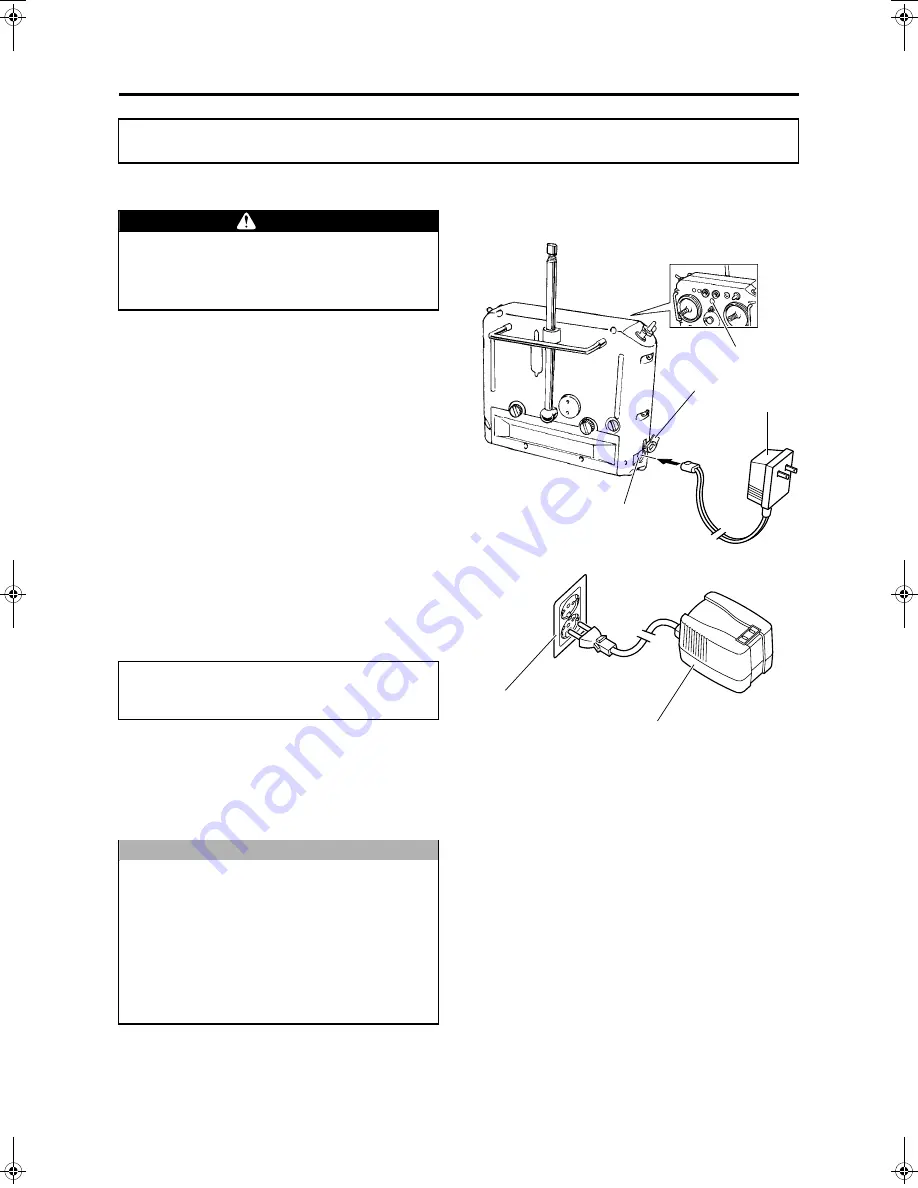
4-1
Pre-Flight Preparation and Inspection
Recharging and Replacing Flight Transmitter Battery
Recharging the Battery
Make sure to use the dedicated battery recharger
for the transmitter, and recharge the battery as fol-
lows:
1
Check that the power switch for the transmitter is
turned OFF.
2
Remove the plug from the charging jack.
3
Insert the recharger plug into the charging jack
on the back of the transmitter.
4
Insert the power cord for the electrical trans-
former (AC 240V
→
AC 100V) into a power out-
let.
5
Insert the recharger into the electrical trans-
former.
6
The pilot lamp on the recharger illuminates to
indicate that the battery is being recharged.
The charging temperature range, recharging time,
and duration of use of the battery are as follows.
7
After the battery has been recharged, make sure
to install the plug into the charging jack.
8
The battery monitor function indicates the bat-
tery
’
s charge status and will alert the operator
during flight if the battery must be replaced. (See
page P3-11.)
Preparation Up to the Day Before
Make sure to use a fully charged battery for
the flight. Using an insufficiently charged
battery could render the helicopter out of
control.
Charging temperature range: 0-40
°
C
Recharging time: 14-16 hours
Duration of use: 2.1-3.3 hours
The dedicated recharger has been designed
for use with AC 100V power outlets.
If the recharger is mistakenly connected
directly to an AC 240V power outlet, the
recharger and the transmitter could be dam-
aged. Therefore, use an electrical trans-
former (AC 240V
→
AC 100V) that conforms
to Australian standards when recharging the
battery.
WARNING
NOTICE
Plug
Recharger AC100V
Charging Jack
Power Switch
Power Outlet
Electrical Transformer AC240V
→
AC100V
AC240V
RMAX.book Page 1 Tuesday, January 17, 2012 3:06 PM
Summary of Contents for RMAX Type II G Unit
Page 4: ......
Page 22: ...Part Names 2 5 ...
Page 40: ...Pre Flight Inspection Items 3 17 ...
















































